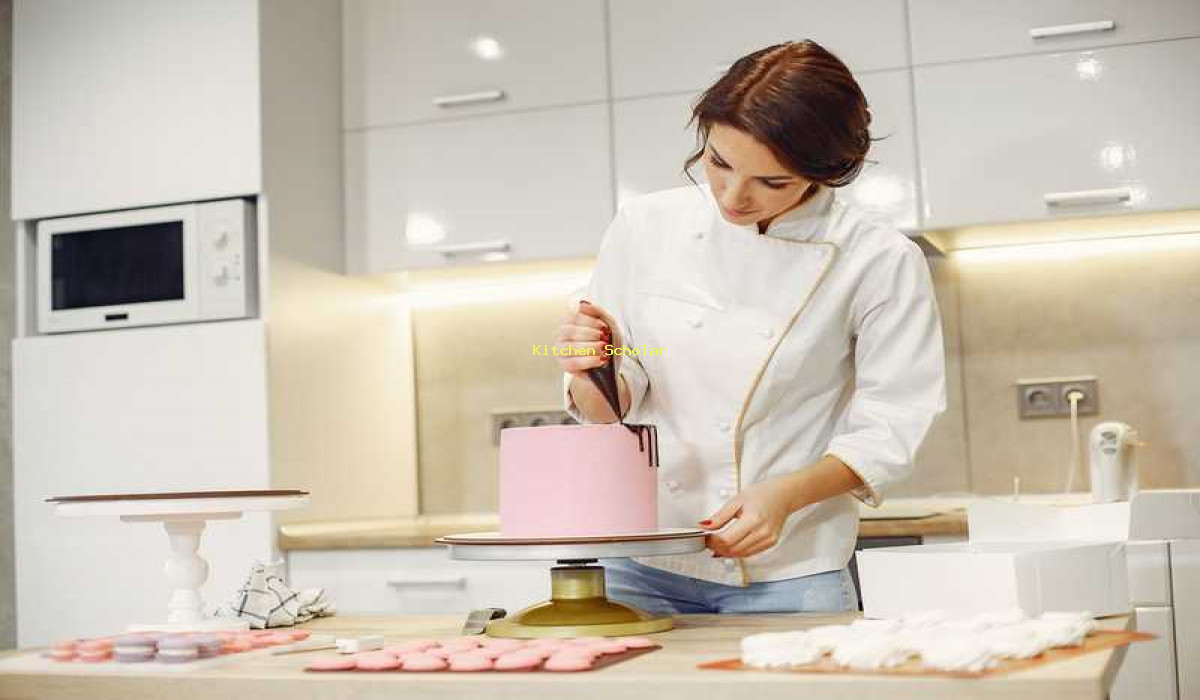9 Tips for Finding the Perfect Kitchen Gloves: A Beginner’s Guide. Discover the best way to protect your hands while cooking with kitchen gloves. From choosing the right material to proper cleaning methods, follow these tips to get the best kitchen gloves for your needs.
9 Tips for Finding the Perfect Kitchen Gloves
9 Tips for Finding the Perfect Kitchen Gloves: A Beginner’s Guide
9 Tips for Finding the Perfect Kitchen Gloves: A Beginner’s Guide. the right material 9 Tips for Finding the Perfect Kitchen Gloves: A Beginner’s Guide
Why Kitchen Gloves are Essential for Anyone in the Kitchen
Kitchen gloves are an important tool for anyone who spends time in the kitchen. Whether you are a professional chef or simply cook at home, protecting your hands while preparing food is crucial. In this blog post, we’ll dive into the benefits of kitchen gloves and provide tips on how to choose the right ones for your needs.
The Benefits of Using Kitchen Gloves
Using kitchen gloves has many benefits, from protecting your hands to improving hygiene in the kitchen. Here are some of the top reasons why kitchen gloves are an essential tool for those who cook:
1) Protection from Heat
One of the main functions of kitchen gloves is to protect your hands from heat. Whether you are removing a hot dish from the oven or handling a pot of boiling water, kitchen gloves act as a barrier between your hands and the high temperature. This is especially important for those who work in professional kitchens, where they are constantly exposed to heat sources.

2) Improved Grip
Another advantage of wearing kitchen gloves is the improved grip they provide. When handling slippery or oily items, such as raw meat or greasy pans, gloves can help prevent accidents by providing a secure grip. This is especially important when working with sharp knives or other kitchen utensils.
3) Protects Against Messy Tasks
Whether it’s kneading dough or breading chicken, some tasks in the kitchen can get pretty messy. With kitchen gloves, you can handle these tasks without getting your hands covered in sticky or messy ingredients. This makes clean-up much easier and more hygienic.
4) Enhances Hygiene
Wearing kitchen gloves can also help maintain hygiene in the kitchen. Our hands carry a lot of bacteria, and when cooking, we can easily transfer it to the food we’re preparing. By wearing gloves, we can reduce the risk of cross-contamination and help prevent the spread of germs.
Types of Kitchen Gloves
There are several types of kitchen gloves available, each with its own unique features and benefits. Here are some of the most common types of kitchen gloves you can choose from:
1) Disposable Gloves
Disposable gloves are usually made of thin plastic or vinyl and are designed to be worn once and then thrown away. They are a cost-effective option for basic kitchen tasks and are often used in commercial kitchens. However, they offer minimal protection and are not environmentally friendly.
2) Rubber Gloves
Also known as dishwashing gloves, rubber gloves are made from waterproof materials such as latex or nitrile. These gloves are ideal for tasks that involve a lot of water, such as washing dishes or cleaning produce. They provide good grip and protection against hot water and harsh cleaning chemicals.
3) Cut-Resistant Gloves
As the name suggests, cut-resistant gloves are designed to protect your hands from sharp objects, such as knives or graters. They are usually made of materials like Kevlar or stainless steel mesh and are a must-have in any professional kitchen. However, they may be a bit bulky and can limit dexterity.
4) Oven Mitts
Oven mitts are another type of kitchen gloves that are essential for any home cook. They are thick, heat-resistant gloves that provide a secure grip when handling hot items from the oven or stovetop. Oven mitts are usually made of materials like silicone or cotton and offer better dexterity than traditional kitchen gloves.
How to Choose the Right Kitchen Gloves
Now that you know the different types of kitchen gloves available, you may be wondering which one is best for you. Here are some factors to consider when choosing the right kitchen gloves for your needs:
1) Function
Before buying kitchen gloves, think about what tasks you will be using them for. If you spend a lot of time handling hot items9 Tips for Finding the Perfect Kitchen Gloves, you’ll need heat-resistant gloves. For cutting tasks9 Tips for Finding the Perfect Kitchen Gloves, look for cut-resistant gloves. And for basic everyday tasks, dishwashing gloves or oven mitts may suffice.
2) Material
The material of the gloves is important as it impacts their durability, comfort, and protection. Rubber gloves are great for handling water and washing dishes, while cut-resistant gloves are ideal for slicing and chopping. For heat protection, look for gloves made of silicone or Kevlar.

3) Size and Fit
It’s crucial to choose the right size and fit when purchasing kitchen gloves. Gloves that are too big or too small can decrease dexterity and make tasks more difficult. Measure your hand and compare it to the size chart provided by the manufacturer to ensure the best fit.
4) Comfort
Comfort is also an essential factor when selecting kitchen gloves. Look for gloves that offer a good grip, are flexible, and have proper lining for added comfort. You’ll be wearing these gloves for extended periods, so it’s important to choose a comfortable pair.
5) Durability
The durability of kitchen gloves is crucial, especially if you will be using them frequently9 Tips for Finding the Perfect Kitchen Gloves. Rubber gloves may degrade with repeated use, while cut-resistant gloves can withstand heavier use. Consider the materials and construction of the gloves to ensure they will last.
6) Chemical Resistance
For those who work with harsh chemicals, chemical-resistant gloves are a must. Look for gloves made of nitrile or neoprene9 Tips for Finding the Perfect Kitchen Gloves, as these materials offer better protection against chemicals. Always check the manufacturer’s specifications to ensure the gloves are suitable for the chemicals you will be handling.
Proper Use and Care for Kitchen Gloves
To get the most out of your kitchen gloves, it’s important to use and care for them correctly. Here are some tips on how to properly use and maintain your kitchen gloves:
1) Replace Regularly
Disposable gloves should be thrown away after each use9 Tips for Finding the Perfect Kitchen Gloves, while other types of gloves should be replaced periodically. Check the manufacturer’s instructions for the recommended replacement timeline.
2) Avoid Cross-Contamination
If you are using your gloves for multiple tasks, be sure to change them between tasks to avoid cross-contamination. For example, if you are handling raw meat and then want to chop produce9 Tips for Finding the Perfect Kitchen Gloves, replace your gloves before starting the next task.
3) Wash Regularly
For reusable gloves9 Tips for Finding the Perfect Kitchen Gloves, wash them regularly with warm water and mild soap. Allow them to air dry completely before using them again.
4) Store Properly
Store your kitchen gloves in a dry9 Tips for Finding the Perfect Kitchen Gloves, cool place to avoid any damage or bacteria growth. Avoid storing them near heat sources or in direct sunlight.
5) Inspect for Damage
Regularly inspect your gloves for any signs of damage, such as tears or holes. Replace them immediately if you notice any damage, as it can compromise their effectiveness.
9 Tips for Finding the Perfect Kitchen Gloves: A Beginner’s Guide
Discover the best way to protect your hands while cooking with kitchen gloves. From choosing the right material to proper cleaning methods, follow these tips to get the best kitchen gloves for your needs.. Title 9 Tips for Finding the Perfect Kitchen Gloves: A Beginner’s Guide
Kitchen Gloves: Tips for Choosing and Maintaining Them
When it comes to kitchen safety, many people often overlook the importance of using proper gloves while handling food and performing various kitchen tasks. Kitchen gloves are an essential tool in any kitchen setting, be it a domestic kitchen or a commercial one. They not only protect your hands from heat, cuts, and chemicals but also help maintain proper hygiene. In this article, we will discuss all the essential aspects of kitchen gloves – from choosing the right one to maintaining them for long-term use. So without further ado, let’s get started!
Types of Kitchen Gloves
Kitchen gloves come in various shapes, sizes, and materials depending on their function and specific purpose. Here are some of the commonly used kitchen gloves you can choose from:
1. Latex Gloves
Latex gloves are made from natural rubber and are perfect for handling food items. They are relatively inexpensive and provide an excellent grip9 Tips for Finding the Perfect Kitchen Gloves, making them ideal for tasks like chopping, peeling, and grating. However, if you have a latex allergy, you may want to avoid these gloves9 Tips for Finding the Perfect Kitchen Gloves.
2. Nitrile Gloves
Nitrile gloves are similar to latex gloves but are made from synthetic rubber9 Tips for Finding the Perfect Kitchen Gloves. They are a great alternative for those with latex allergies. These gloves are extremely durable and offer protection against cuts and abrasions. However, they can be less elastic than latex gloves, which may hinder movement.
3. Vinyl Gloves
Vinyl gloves are made from a type of plastic called polyvinyl chloride (PVC). They are relatively inexpensive, but not as durable as latex or nitrile gloves. They are often used in food handling as they provide a barrier against bacteria and other contaminants.
4. Silicone Gloves
Silicone gloves are perfect for tasks that require high heat resistance, such as handling hot pans and baking. They are reusable9 Tips for Finding the Perfect Kitchen Gloves, easy to clean, and provide excellent grip. However, they can be less flexible than other materials and may feel bulky to some individuals.
Choosing the Right Size
Aside from the material, it is crucial to choose the right size of kitchen gloves to ensure maximum comfort and protection. Wearing gloves that are too tight can restrict movement and cause discomfort, while wearing gloves that are too loose may lead to accidents and injuries. To determine your glove size9 Tips for Finding the Perfect Kitchen Gloves, measure the circumference of your dominant hand just below your knuckles.
Note:
For latex and nitrile gloves, make sure to measure your diameter in inches and compare it to the size chart provided by the manufacturer. For vinyl and silicone gloves, use the standard Small, Medium, Large, and Extra-Large sizes.
Proper Maintenance of Kitchen Gloves
To ensure your kitchen gloves last long and remain hygienic, it is essential to practice proper maintenance. Here are some tips for maintaining your kitchen gloves:
1. Regular Cleaning and Drying
After each use, make sure to rinse your gloves with warm water and soap to remove any food particles and bacteria. For extra protection, you can soak them in a mixture of warm water and white vinegar for about 10 minutes before rinsing. 9 Tips for Finding the Perfect Kitchen Gloves, let the gloves air dry completely before storing them.
2. Use Powder or Cornstarch
To prevent bacteria growth and absorb moisture9 Tips for Finding the Perfect Kitchen Gloves, you can sprinkle some powder or cornstarch inside your gloves before storing. This method also helps keep your gloves smelling fresh.
3. Avoid Exposing to Sunlight
Direct sunlight can weaken the material of your gloves, making them brittle and prone to tearing. Avoid leaving them out in the sun to dry and instead, opt for air-drying them in a cool, dark place.
4. Replace When Necessary
Even with proper maintenance, kitchen gloves need to be replaced from time to time. If you notice any tears, holes, or signs of wear and tear, it is best to replace your gloves to maintain proper hygiene and safety.
Conclusion
Choosing the right kitchen gloves and maintaining them properly can save you from unwanted accidents and injuries while working in the kitchen. It is essential to consider the task at hand and the material of the gloves before making a purchase. Additionally, proper maintenance and regular replacement can ensure your gloves remain hygienic and in good condition for long-term use. Now that you have all the necessary information on kitchen gloves, go ahead and choose the perfect pair for your kitchen! 9 Tips for Finding the Perfect Kitchen Gloves: A Beginner’s Guide

9 Tips for Finding the Perfect Kitchen Gloves: A Beginner’s Guide
What material are kitchen gloves made of?
Kitchen gloves are mostly made of silicone, rubber, or vinyl.
How often should kitchen gloves be replaced?
Kitchen gloves should be replaced every 2-3 months or when they start to show signs of wear and tear.
Are kitchen gloves heat resistant?
It depends on the material. Silicone and rubber gloves are heat resistant, while vinyl gloves are not.
Can kitchen gloves be washed in the dishwasher?
Yes, most kitchen gloves are dishwasher safe. 9 Tips for Finding the Perfect Kitchen Gloves, it is best to check the manufacturer’s instructions first.
What size kitchen gloves should I get?
Kitchen gloves come in different sizes, so it is important to measure your hands and check the size chart before purchasing.
Are kitchen gloves waterproof?
Yes, most kitchen gloves are waterproof. This makes them perfect for dishwashing, cleaning, and handling wet food.
Can I use kitchen gloves to handle hot food?
Yes, as long as the gloves are heat resistant. It is best to read the product description to make sure.
Can kitchen gloves be used for other purposes?
Yes, kitchen gloves can also be used for gardening, household chores, and even as oven mitts.
How do I clean kitchen gloves?
Kitchen gloves can be washed with soap and water or by throwing them in the washing machine. Let them air dry before using again.
Are kitchen gloves suitable for people with allergies?
It depends on the material. Vinyl gloves are good for people with latex allergies, while rubber and silicone gloves may not be suitable. 9 Tips for Finding the Perfect Kitchen Gloves: A Beginner’s Guide
